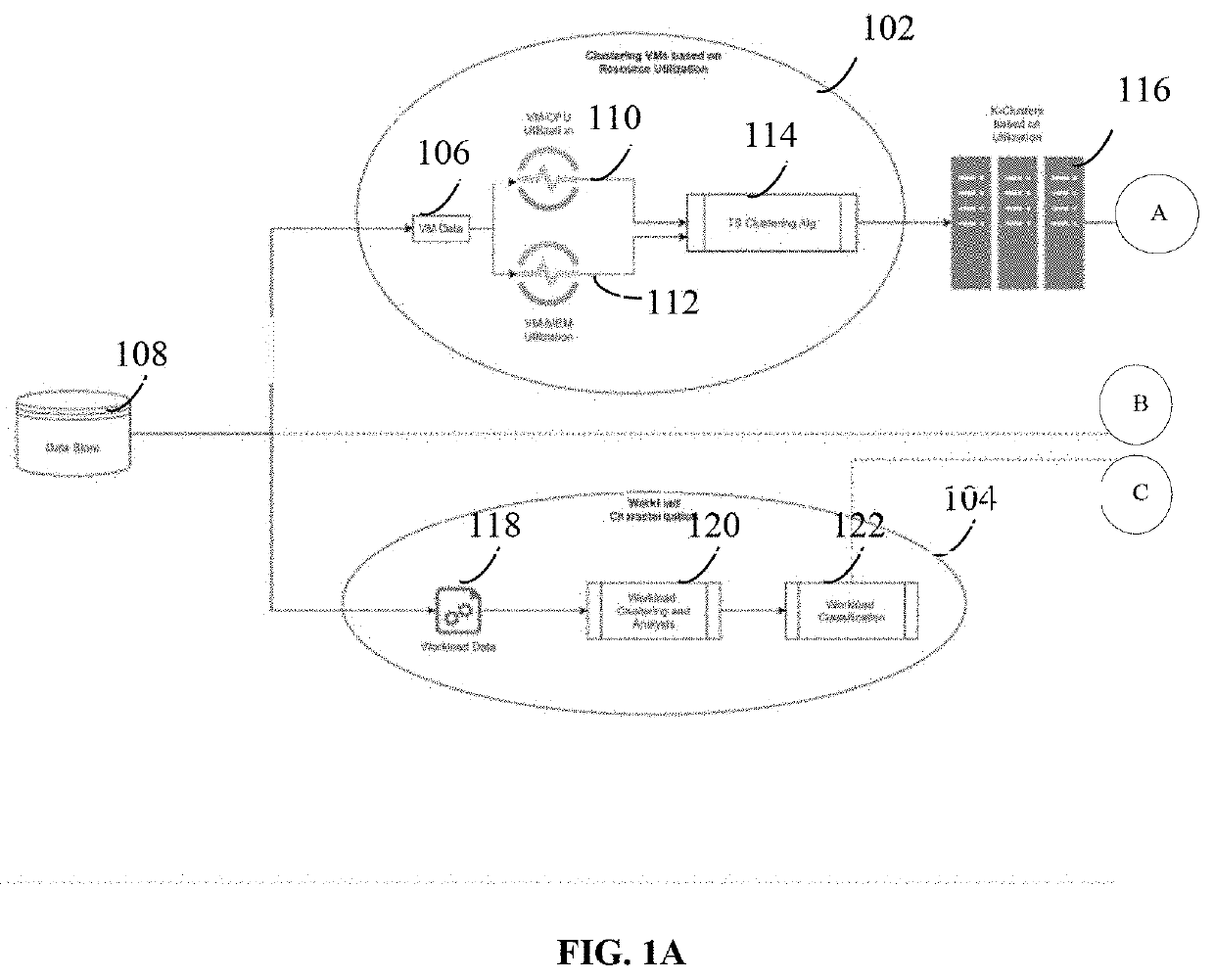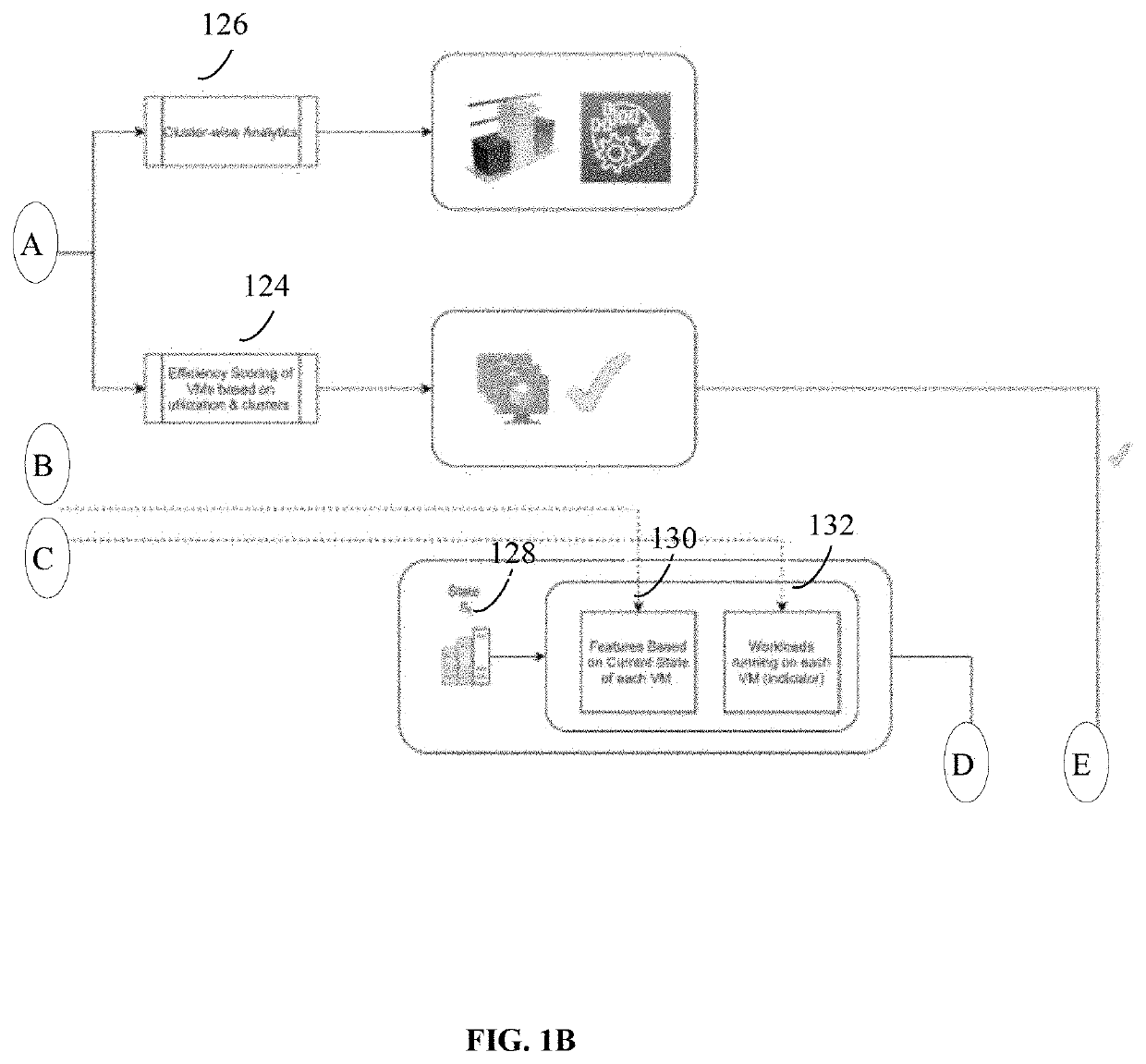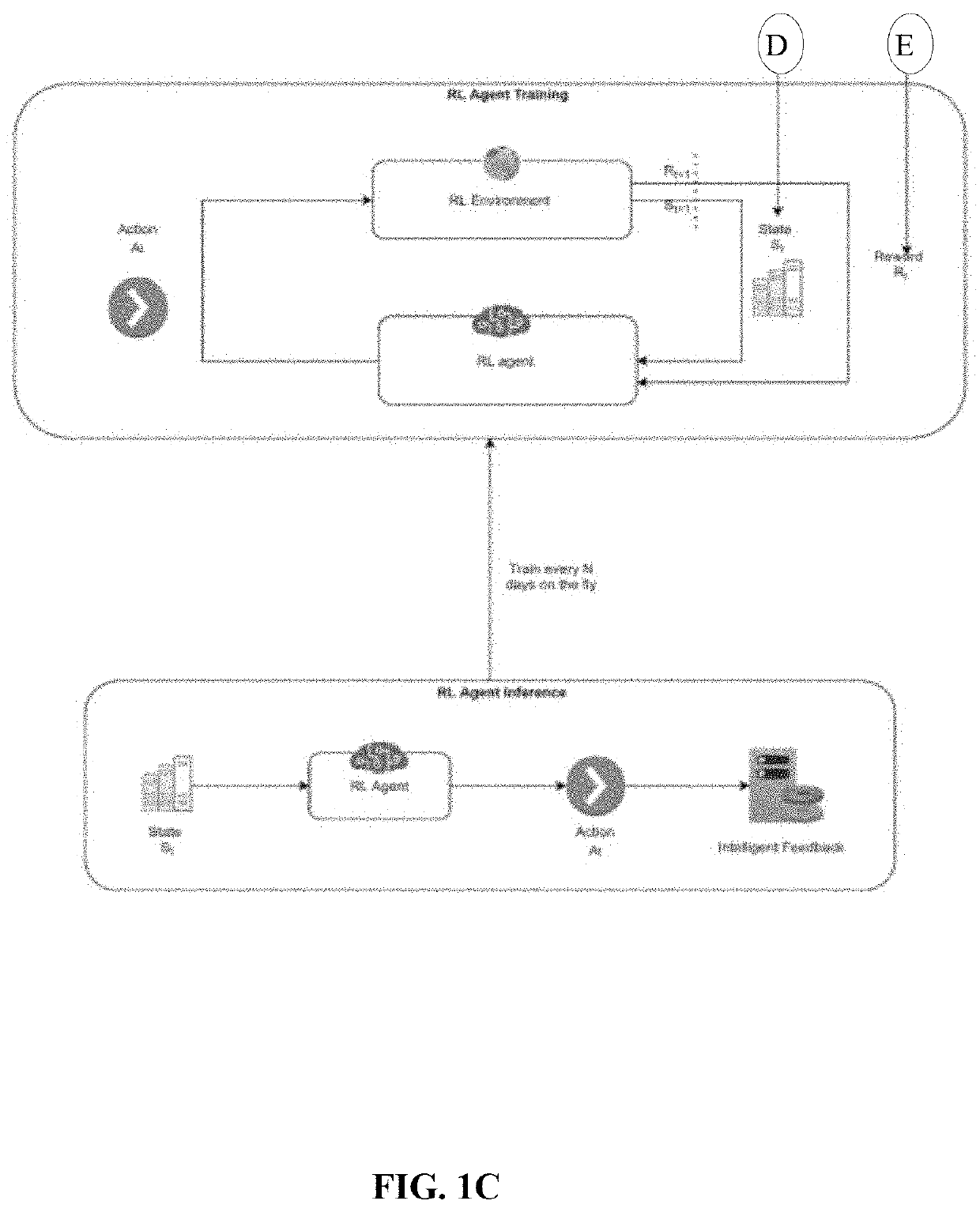Method and system for ai based automated capacity planning in data center
a data center and capacity planning technology, applied in the field of networked computer system management, can solve the problems of large-scale applications that create many new challenges, planners lack adequate tools to identify and measure service performance, and it is difficult to predict service performance, so as to optimize improve performance and resource availability, and optimize the effect of plurality
- Summary
- Abstract
- Description
- Claims
- Application Information
AI Technical Summary
Benefits of technology
Problems solved by technology
Method used
Image
Examples
Embodiment Construction
[0007]The primary object of the embodiments herein is to provide a method and system for capacity planning based on intelligent feedback and analytics in a datacenter.
[0008]Another object of the embodiments herein is to provide a method and a system for capacity planning based on an intelligent feedback along with the analytics provided in workload characterization and resource clustering that enables the end user (datacenter manager) to make appropriate decisions to keep the datacenter performing efficiently.
[0009]Yet another object of the embodiments herein is to provide a method and a system for capacity planning based on an intelligent feedback that enables the datacenter to elastically scale up and down in an effective way.
[0010]Yet another object of the embodiments herein is to provide a method and a system for capacity planning based on an intelligent feedback along with analytics provided in workload characterization and resource clustering, such that the resource clusters a...
PUM
 Login to View More
Login to View More Abstract
Description
Claims
Application Information
 Login to View More
Login to View More - R&D
- Intellectual Property
- Life Sciences
- Materials
- Tech Scout
- Unparalleled Data Quality
- Higher Quality Content
- 60% Fewer Hallucinations
Browse by: Latest US Patents, China's latest patents, Technical Efficacy Thesaurus, Application Domain, Technology Topic, Popular Technical Reports.
© 2025 PatSnap. All rights reserved.Legal|Privacy policy|Modern Slavery Act Transparency Statement|Sitemap|About US| Contact US: help@patsnap.com



